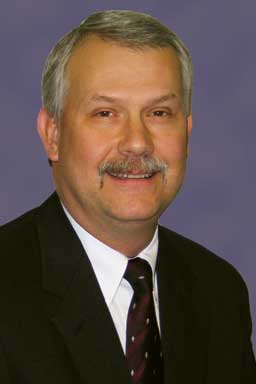From the Executive Director: Don’t stop me if you have heard this before
Recently I was listening to an interview of a novelist who had quit writing after a very successful but rather short career. When asked why she quit, she replied that she was afraid of repeating herself. While I can see her reasoning, I do not share her fear. In fact I am reasonably sure that over the last 11 years of writing this column I have repeated myself numerous times.
In my first column in the May-June 2000 issue of Swine Health and Production, I listed my observations of the drivers for the future success of the AASP. I have no fear of repeating them today because I believe these to still apply to the AASV:
• Ensuring the right people are in the right place at the right time.
• Allowing younger members to assume leadership roles.
• Keeping longtime members engaged and accessible.
• Providing resources to do what needs to be done.
• Maintaining a “lean and mean” organizational structure, staff, and office.
• Segmenting the membership to ensure that all needs are adequately met.
• Surpassing the expectations of all who interact with the AASV.
• Providing the best education, information, networking, and advocacy for swine practitioners.
I can provide several current AASV activities that illustrate these drivers. Recently Dr Paul Ruen was appointed to a five-person AVMA committee that will have extensive interaction with the FDA Center for Veterinary Medicine on issues of veterinarian oversight of antibiotic use in food animals. The selection process for this committee was as rigorous and competitive as I have ever witnessed in the AVMA. Paul’s knowledge of these issues, combined with his practice experience, made him a strong nominee to this committee. His willingness to continue serving organized veterinary medicine after his term as AASV president was even more evidence that we had the right person.
The AASV commitment to encouraging younger members in leadership roles can be seen in our organization’s committees. The list of committee chairs includes Drs Dyneah Classen, Erin Johnson, Brad Leuwerke, Sarah Probst Miller, Michelle Sprague, Angie Supple, and Amy Woods. Thanks to these members, AASV committees are active and committed to serving the best interests of swine veterinarians. A strong and responsive committee system is vital to the AASV, especially when considering the number of issues confronting the profession and the pork industry.
To date there have been 42 presidents of the AASV. That means there are 41 past presidents. This group of former officers represents a wealth of knowledge and experience that we have not used very well once their terms were completed. That changed this spring when the AASV Executive Committee met with 16 past presidents to engage them in a strategic discussion on the organization. This group represented a span of 35 years of AASV leadership.
At its spring meeting, the Board of Directors considered a number of requests from committees requiring funds. In approving the use of AASV resources to fund these requests, the board recognized what needed to be done in the areas of new Webinars, videotaping presentations, and further training for veterinarians in foreign animal disease surveillance.
One request that is still pending before the board is the creation of a new position in the area of PRRS programs. In 2005, the AASV approved the statement that eradication of PRRS was the long-term goal. In recognition of this statement and the numerous efforts in regional elimination projects being undertaken, the board is considering how the AASV can best facilitate PRRS programs. One option is to hire additional personnel. Currently, AASV staff and the PRRS Task Force are assessing the needs associated with PRRS programs. This assessment will be considered along with needs for additional support for other areas within the AASV. Finally all will be balanced with the goal to maintain a “lean and mean” organization.
The other drivers in the list from 2000 can easily be seen in a number of areas within the AASV. The annual meeting remains a primary emphasis for the education of our members. It provides attendees with choices for education in specific areas of swine veterinary medicine. It also provides opportunities for information transfer and networking with veterinarians, researchers, veterinary students, and commercial representatives from around the world.
Apart from the annual meeting, the AASV provides ongoing education and information through the bimonthly Journal of Swine Health and Production as well as the weekly e-Letter. It also provides a tremendous resource in the Information Library which contains not only the proceedings from past AASV annual meetings, but also the proceedings from other major meetings of interest to swine veterinarians. The AASV Web site also provides many other resources that are available to members 24 hours a day.
Organizations like the AASV mature, improve, and evolve over time, but successful associations maintain a commitment to their core values. Perhaps that is why I am not afraid of repeating myself from time to time.
— Tom Burkgren, DVM
